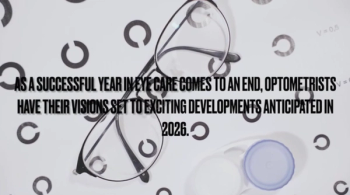
Combination microdrops for ROP screening: Fewer systemic adverse events than standard mydriatrics
The rationale was that commercial mydriatics administered during retinopathy of prematurity (ROP) screening have been associated with cardiorespiratory and gastrointestinal adverse events.
A team of Greek researchers reported that microdrops comprised of 1.67% phenylephrine and 0.33% tropicamide were noninferior to standard drops in their efficacy and reduced the systemic adverse events caused by the standard eye drops used during retinopathy of prematurity (ROP) screening of preterm infants,1 according to first author Aikaterini K. Seliniotaki, MD, MSc, PhD. She is from the Second Department of Ophthalmology, and Department of Hygiene, Social-Preventive Medicine & Medical Statistics, School of Medicine, Faculty of Health Sciences, Aristotle University of Thessaloniki, Thessaloniki, Greece.
The rationale for the randomized, double-masked, noninferiority, crossover study, the MyMiROPS Randomized Clinical Trial (ClinicalTrials.gov Identifier:
She and her colleagues set out to investigate both if microdrops comprised of 1.67% phenylephrine and 0.33% tropicamide are noninferior to standard drops regarding the mydriatic efficacy at 3 time points: 45, 90, and 120 minutes, and the occurrence of systemic adverse events.
This trial included infants undergoing ROP screening at a tertiary center in Northern Greece from September 2021 to January 2023. The infants all had a gestational age below 32 weeks and/or a birthweight under 1,501 grams.
Following instillation of either the microdrops or standard drops, investigators measured the horizontal pupil diameters at 45, 90, and 120 minutes. The noninferiority margin was defined as −0.4 mm. The heart rate, oxygen saturation, and blood pressure also were measured at the same times. They also assessed any 24-hour hypertensive episodes and 48-hour systemic adverse events. In, the phenylephrine concentration in the peripheral blood was measured within 3 hours after instillation.
Outcomes
The study included 83 infants (mean ± standard deviation) gestational age, 29.7 ±2.0 weeks; mean birth weight, 1,277 ± 374 grams). The investigators reported, “Microdrops proved to be superior regarding mydriatic efficacy at 45 minutes (mean difference, 0.12; Bonferroni-corrected 95% confidence interval [CI], 0.01-0.23; P = 0.008) and noninferior at 90 minutes (Bonferroni-corrected 95% CI, −0.100.17) and 120 minutes (Bonferroni-corrected 95% CI, −0.18-0.14).”
The researchers also reported that after instillation of the standard drops the oxygen saturation rates at 45 minutes (mean difference, 0.66; 95% CI, 0.09-1.24; P = 0.03) and 90 minutes (mean difference, 0.58; 95% CI, 0.03-1.14; P = 0.04) were lower and they saw a higher percentage of 24-hour hypertensive episodes (0.14% [0.06%-0.40%]; P = 0.01) (median [IQR] percentage of hypertensive episodes: microdrops, 0.10% [0.02%-0.19%].
Seliniotaki and colleagues concluded, “To our knowledge, this is the first study establishing the noninferiority of microdrops compared with standard drops of a diluted mydriatic mixture, showing reduced systemic adverse events after microdrops and determining the pharmacokinetic profile of phenylephrine eye drops in preterm infants.”
Reference:
Seliniotaki AK, Lithoxopoulou M, Virgiliou C, et al. Retinopathy of prematurity screening. The MyMiROPS Randomized Clinical Trial. JAMA Ophthalmol. Published online December 26, 2024. doi:10.1001/jamaophthalmol.2024.5462
Newsletter
Want more insights like this? Subscribe to Optometry Times and get clinical pearls and practice tips delivered straight to your inbox.













































.png)


